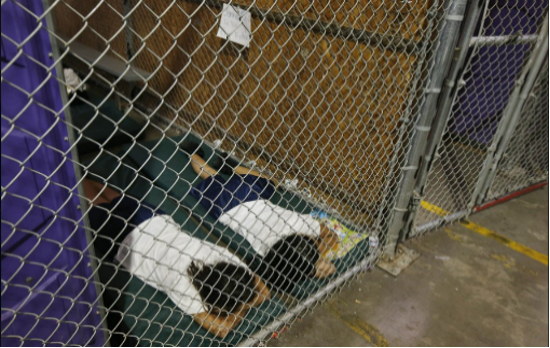Manipulated Content-False Connection
While fabrication is 100 percent false, the next type of fake news actually has some truth to it. Manipulation can be described as news stories that use “real images or videos to create a false narrative” according to the scholars Tandoc, Lim & Ling (2018, p. 144). Despite there being some truth, using an adaption of imagery to sensationalize a story still misleads consumers by developing a false connection.

One example of manipulated content was an incident that widely become known as “kids in cages.” Photos taken by The Associated Press in 2014 were published with an article discussing Trump’s immigration story claiming that the administration had “lost track of nearly 1,500 immigrant children” according to the AP. The story trended on social media and grabbed the attention of many due to its particularly compelling images of kids confined behind what looks like a fence. One tweet, by Antonio Villaraigosa, the LA mayor, wrote “Speechless. This is not who we are as a nation” (Flaherty & Woodward, 2018).
The compelling photo was in fact real and Trump’s immigration policies were reported accurately; however, the photo placed next to the news story manipulated the content to indicate differently. In response to these allegations, President Donald Trump himself tweeted, “Democrats mistakenly tweet 2014 pictures from Obama’s term showing children from the border in steel cages. They thought it was recent pictures in order to make us look bad, but backfires” (Flaherty & Woodward, 2018).
While there may be some truth to manipulated content, the falsehoods overshadow otherwise important facts or information. Given that Trump popularized the term “fake news” in the wake of the presidential election, incidents that question the credibility of otherwise trusted sources continue to contribute to the lack of believability from consumers. If something is only somewhat true, then it is still fake news.
